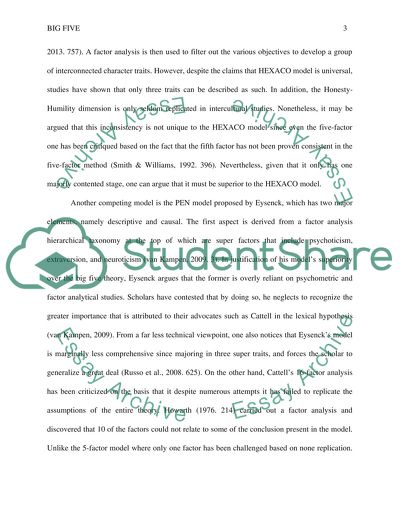Cite this document
(“The Big five Essay Example | Topics and Well Written Essays - 1750 words”, n.d.)
Retrieved from https://studentshare.org/psychology/1665488-individual-differences-what-may-be-said-in-favour-of-big-five-against-its-broad-trait-alternatives-pen-16pf-hexaco-nine-factor-theories-etc-what-may-be-said-against-include-almost-no-merely-descriptive-material-on-big-5-instead-te
Retrieved from https://studentshare.org/psychology/1665488-individual-differences-what-may-be-said-in-favour-of-big-five-against-its-broad-trait-alternatives-pen-16pf-hexaco-nine-factor-theories-etc-what-may-be-said-against-include-almost-no-merely-descriptive-material-on-big-5-instead-te
(The Big Five Essay Example | Topics and Well Written Essays - 1750 Words)
https://studentshare.org/psychology/1665488-individual-differences-what-may-be-said-in-favour-of-big-five-against-its-broad-trait-alternatives-pen-16pf-hexaco-nine-factor-theories-etc-what-may-be-said-against-include-almost-no-merely-descriptive-material-on-big-5-instead-te.
https://studentshare.org/psychology/1665488-individual-differences-what-may-be-said-in-favour-of-big-five-against-its-broad-trait-alternatives-pen-16pf-hexaco-nine-factor-theories-etc-what-may-be-said-against-include-almost-no-merely-descriptive-material-on-big-5-instead-te.
“The Big Five Essay Example | Topics and Well Written Essays - 1750 Words”, n.d. https://studentshare.org/psychology/1665488-individual-differences-what-may-be-said-in-favour-of-big-five-against-its-broad-trait-alternatives-pen-16pf-hexaco-nine-factor-theories-etc-what-may-be-said-against-include-almost-no-merely-descriptive-material-on-big-5-instead-te.


